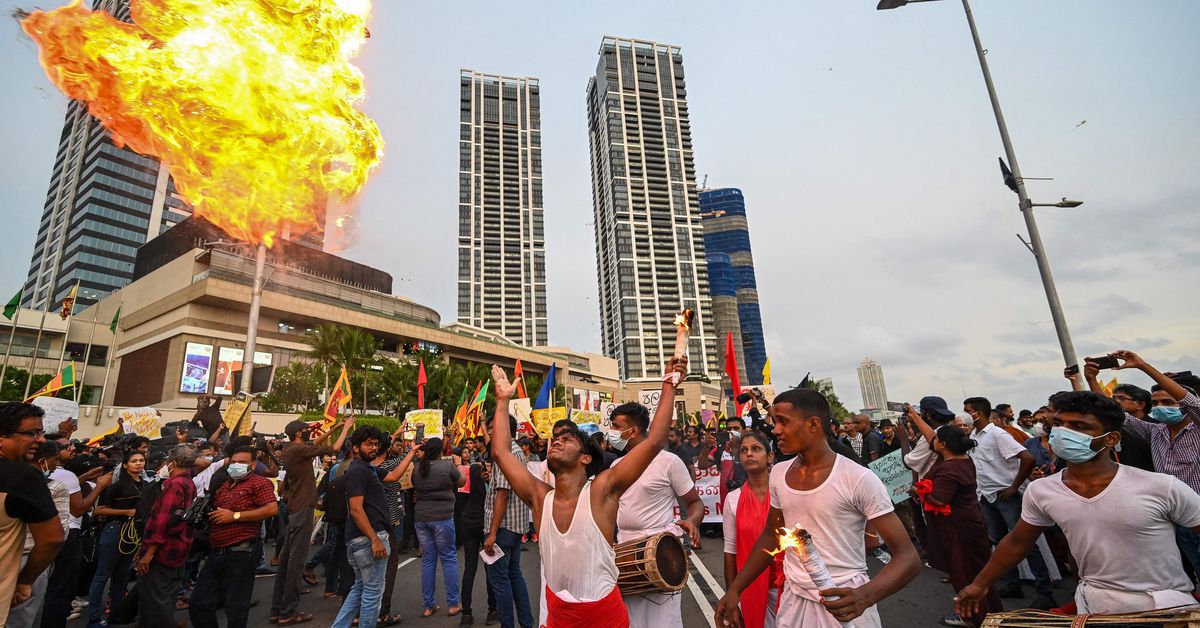
President Joe Biden said during his speech before Congress on Wednesday night that there is “no wall high enough to keep any virus out.”
But he has kept in place a Trump-era policy that effectively put up a wall to the vast majority of migrants arriving on the southern border over the last year on the grounds that they could spread Covid-19, even though they may have legitimate claims for humanitarian protection.
Last March, at the outset of the pandemic, former President Donald Trump invoked Title 42, a section of the Public Health Safety Act that allows the US government to temporarily block noncitizens from entering the US “when doing so is required in the interest of public health.”
The policy has allowed US immigration officials at the southern border to rapidly expel more than 618,000 migrants. Though Centers for Disease Control and Prevention (CDC) scientists initially opposed the policy, arguing that there was no legitimate public health rationale behind it, then-Vice President Mike Pence ordered them to follow through with it anyway.
Nearly 100 days into his first term, Biden so far has not overturned the policy, despite outcry from immigrant advocates and humanitarian groups who say that it prevents migrants from exercising their right under US and international law to seek asylum.
Biden has carved out some exceptions: In addition to admitting unaccompanied children, the administration has started processing 28,000 people who were sent back to Mexico to await their immigration court hearings in the US under a Trump-era program known as the Migrant Protection Protocols, or the “Remain in Mexico” program. The US also started admitting many families to the US last fall after a change in Mexican law limited the country’s capacity to detain those with young children.
The Biden administration has offered little in the way of justification for keeping the policy in place. A senior administration official said earlier this month that they are merely “complying with a CDC order,” and CDC spokesperson Belsie González told Vox that the agency does not discuss such pending regulatory decisions.
But with more than a quarter of the US population fully vaccinated and vaccinations continuing at a rate of 3 million doses per day, it’s not clear that the public health rationale for maintaining Title 42, if it ever existed, will hold for much longer. And any public health risks have to be weighed against the harmful consequences of keeping the policy in place: depriving migrants of their right to seek protection and additional strain on the capacity of northern Mexico’s failing public health system.
“We really trust the Biden administration to not be misusing science, to not be misusing public health justifications for other reasons,” said Michele Heisler, medical director at Physicians for Human Rights and professor of public health and internal medicine at the University of Michigan. “It’s just disappointing that this spurious public health rationale is continuing to be used. ... We expect more from the Biden administration.”
Hannah Janeway, an emergency medicine physician and co-director of the Refugee Health Alliance, has been traveling back and forth between her homes in Los Angeles and Tijuana, Mexico, to administer medical care to migrants staying in the area. She said that in the more than 50 times that she crossed the border over the last year, she was never screened for Covid-19 nor asked any questions about her health, even at the outset of the pandemic last March when fears were running high.
Given that she and thousands of other travelers have been able to cross the US-Mexico border daily without so much as a temperature check, she sees the Title 42 policy not as a public health precaution but as a measure clearly designed to keep out asylum seekers.
“It was very obvious to me that this was a pretext for not letting across asylum seekers and refugees,” she said. “From the very beginning, I think I knew that this was very targeted.”
If the Trump administration had intended for the policy to protect public health, it would have shuttered the border full stop, which experts now know can be effective in curbing the spread of Covid-19, Heisler said.
But the US continued to accept inbound flights and allowed travel deemed “essential” to continue on both its northern and southern borders. In practice, US citizens and legal permanent residents have been allowed to travel back and forth across the Mexican border as they please, including Texas Sen. Ted Cruz who infamously absconded on a family vacation to Cancún just as his state was experiencing a power crisis in February.
That has meant that border crossings decreased significantly from more than 188 million people traveling by foot, bus, train, or personal vehicle in 2019 to roughly 106 million people in 2020, according to data from the Department of Transportation. But the border was clearly still quite active.
What’s more, Heisler said that there is no evidence that, as a group, migrants on the border are epidemiologically more like to test positive for Covid-19.
Now that officials are beginning to process and health screen people who were placed in the Remain in Mexico program, they have actually found low Covid-19 positivity rates. In March, the acting head of the Federal Emergency Management Agency told Congress that less than 6 percent of migrants at the border had tested positive for Covid-19, a lower percentage than the Texas positivity rate at that time.
“I think it continues to be clear that the Title 42 travel ban is using a public health rationale for what is an ideological and political reason,” Heisler said. “They’re afraid of sending a message that people should come.”
Keeping Title 42 in place continues to carry a humanitarian cost. A joint human rights report published earlier this month documented at least 492 attacks or kidnappings of asylum seekers expelled under the policy since Biden took office. It is likely that the actual number of such incidents is much higher, given that the report was based on 110 interviews and an electronic survey of 1,200 asylum seekers in the Mexican state of Baja California — just a fraction of the people who have been expelled.
The policy has also resulted in a de facto form of family separation. Parents have sent their children to the border alone, knowing that they would be accepted by US authorities, while they await a chance to cross either in Mexico or their home countries. That has been the case since last fall, when a court forced the Trump administration to begin accepting unaccompanied children. The Biden administration opted to continue doing so, acknowledging its humanitarian obligations.
Reuters reported that smugglers have consequently been arranging trips from Central America just for children, encouraging families to pay thousands of dollars to send them alone by bus, car, boat, or plane.
“The minors are allowed in, which creates really difficult logistical barriers, because the children do have to stay in some kind of shelter, often in congregate settings, so that they can do background checks, they can find their family in the US,” Heisler said.
Migrants who have been expelled to Mexico under the Title 42 policy are also overwhelming government and civil society resources to provide for their basic needs and medical care, putting pressure on a hospital system that is already stretched too thin.
Janeway said that the free clinic she runs in Tijuana has recently experienced a huge increase in the number of patients they’re seeing on a daily basis, including people presenting with dehydration, a range of infectious diseases including Covid-19, and rashes.
Many of them are coming from government-run migrant shelters that typically house 250 people but are now well over capacity by an additional 400 to 500 people and are unable to enforce social distancing. The Mexican government, which has been under stress as it struggles to roll out the vaccine and as increasing numbers of migrants continue to arrive, hasn’t been able to provide those shelters with adequate aid. Janeway’s organization has consequently stepped in to provide them with potable water.
There is also an encampment in Tijuana that sprang up earlier this year where there is no public sanitation. There is one bathroom that the more than 1,000 migrants in the camp have to pay to use, but some people don’t have the money. That had led to concerns about infectious diseases spreading among the population.
Janeway said she saw one child staying at the government-run shelters who had a severe asthma attack and who was turned away from several hospitals since there is currently no public hospital in Tijuana that is accepting patients other than those presenting with Covid-19. The child finally received emergency care an hour’s drive away.
“What if that child had had a more serious [asthma attack]? It’s likely that they could have died,” she said.
Migrants with severe health problems have nowhere to turn besides free clinics run by Janeway and some other groups.
“But if they need emergency care or something beyond the scope of what we’re able to provide, they’re really facing having to go over 45 minutes away to a hospital that is stretched very thin right now and doesn’t have the basic necessities to provide adequate care,” she said.
Migrants are also being transported on buses where they often aren’t given masks, Janeway said. If they were allowed to enter the US, where many of them are planning to reunite with family members, they would be able to isolate more effectively. One 2019 study found that 92 percent of asylum seekers at the southern border had family or friends in the US that they could stay with.
The Biden administration has suggested that the Title 42 policy is a kind of stopgap policy until it can implement a new asylum processing system. In the meantime, its message to migrants is “don’t come.”
“[W]e have not had the time, as an administration, to put in place a humane, comprehensive process for processing individuals who are coming to the border,” White House press secretary Jen Psaki said in a press conference in February. “Asylum processes at the border will not occur immediately; it will take time to implement.”
But immigrant advocates have argued that’s no justification for maintaining the policy that is supposed to be based on protecting public health. What’s more, a system to process migrants arriving on the border already exists.
In coordination with the United Nations Refugee Agency (UNHCR) and the International Organization for Migration, Janeway’s organization is conducting health screenings and providing medical passports for people staying at one of the large shelters in Tijuana who were part of the Remain in Mexico program. At the direction of the Biden administration, they are processing 50 to 75 people a day so that they can cross the border in an orderly and safe way to await their immigration court hearings in the US.
That kind of system is scalable given the availability of rapid PCR and antigen testing for Covid-19 if the US were to lift the Title 42 restrictions and resume processing all migrants arriving on the border, Janeway said.
“Migrants can safely cross into the United States, and it’s already being done,” she said. “It could happen with other individuals as well, but it’s just obvious that the US government doesn’t have an interest in doing that right now because they haven’t allowed for it to happen.”
But she said that Covid-19 testing doesn’t even necessarily need to occur for processing to resume. In her view, it would be enough for migrants just to use masks, wash their hands, and abide by social distancing.
“We’re doing a lot of things right now to appease people who are involved in this process, but do I think that they are necessary from a public health standpoint? The answer is no,” she said.
source https://www.vox.com/policy-and-politics/22398712/biden-title-42-migrant-border-expel







Post a Comment
EmoticonClick to see the code!
To insert emoticon you must added at least one space before the code.